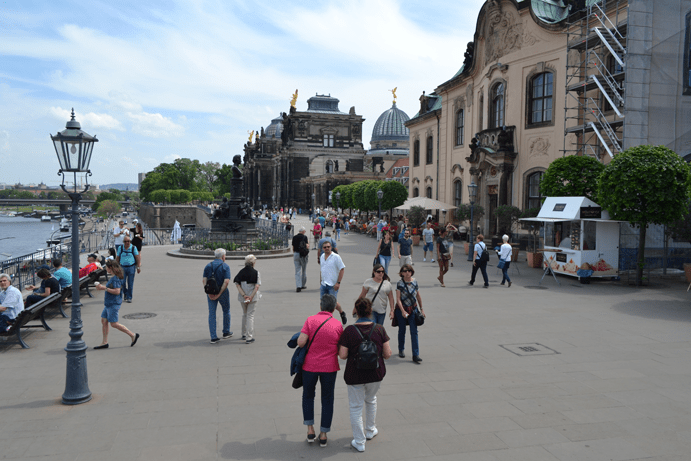Old Splendor in New Glory: Culture, Baroque architecture and museums
By Don Heimburger •Photographs Courtesy Don Heimburger
The area around this part of Germany has been heralded with names such as the “Cradle of Saxony”, “Playground of the Nymphs” and “Florence of the Elbe”. And today this phrase can be added—“Old Splendor in New Glory.”
Dresden is the fourth largest city in Germany and was once fire-bombed so heavily duringWWII that the city center was reduced to rubble and flames. Eight square miles were completely destroyed. But Dresden has climbed back steadily from that fateful period and regained its composure. Today Dresden’s residents and visitors enjoy many cultural, educational and artistic highlights that propel it as one of Germany’s most impressive cities.
“Apart from the fact that it is simply fascinating to follow how the historical structure of streets, squares and blocks take shape around the Frauenkirche,” says Dresden Mayor Dirk Hilbert, “I am at least as impressed by the long-running energy and commitment among architects, developers, planners, engineers, cultural heritage professionals, citizens, non-government organizations and politicians for this revitalization program. This process is dictated by the long term aftermaths of World War II, destruction and loss but also by the question how society might learn from history and pass valuable experience and knowledge onto coming generations.”
Standing on the long and wide Brühl’s Terrace on the Elbe, and gazing at the river and its gleaming riverboats, the aesthetically pleasing buildings and statutes, and the mass of tourists who now flock here to enjoy this metropolis, you know Dresden is something special. It has gained the reputation as a “jewel box.”
To read more subscribe now! Click here!

